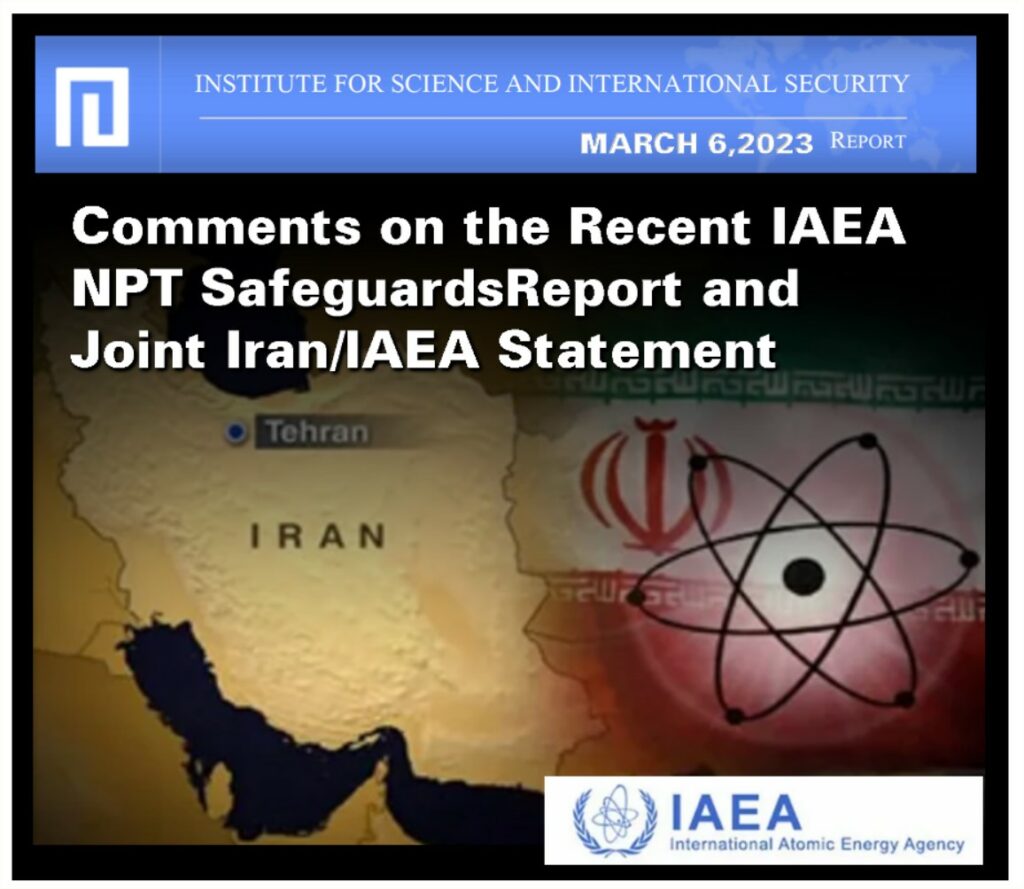
The latest International Atomic Energy Agency (IAEA) report, NPT Safeguards Agreement with the Islamic Republic of Iran, on the implementation of Iran’s safeguards agreement was issued on March 4, 2023, following Director General Rafael Grossi’s return from meetings with top Iranian officials in Tehran, including its President, Foreign Minister, and head of the Atomic Energy Organization of Iran (AEOI).
- This latest quarterly safeguard report, as earlier IAEA reports during the last two years, highlights Iran’s refusal to cooperate with the IAEA in rectifying the inspectors’ findings that Iran has undeclared nuclear material and related equipment, a violation of its comprehensive safeguards agreement; findings that date back to 2019, but all part of an investigation that has been on-going for almost two decades.
As has happened before, this report contains promises from Iran to resolve these safeguards issues. This time the promises and commitments are outlined briefly in the form of a Joint Statement between the IAEA and the AEOI. The March 4th statement, formalized in Tehran over the weekend, is vague on details, but several of them were filled in by Grossi at a press conference in Vienna on Saturday after his return from Tehran.
ANALYSIS OF IAEA IRAN VERIFICATION AND MONITORING REPORT – FEBRUARY 2023 BY DAVID ALBRIGHT, SARAH BURKHARD, SPENCER FARAGASSO, AND ANDREA STRICKER MARCH 3, 2023
FINDINGS ● IRAN CAN NOW BREAK OUT AND PRODUCE ENOUGH WEAPON-GRADE ENRICHED URANIUM FOR A NUCLEAR WEAPON IN 12 DAYS, USING ONLY THREE ADVANCED CENTRIFUGE CASCADES AND HALF OF ITS EXISTING STOCK OF 60 PERCENT ENRICHED URANIUM.
This breakout could be difficult for inspectors to detect promptly, if Iran took steps to delay inspectors’ access. ● Using its remaining stock of 60 percent enriched uranium and its stock of near 20 percent enriched uranium, Iran could produce enough weapon-grade uranium for an additional four nuclear weapons in a month. During the next two months, Iran could produce two more weapons’ worth of weapon-grade uranium from its stock of less than five percent enriched uranium, meaning that Iran could produce enough weapon-grade uranium for five nuclear weapons in one month and seven in three months. ● The IAEA detected uranium particles enriched to 83.7 percent from environmental sampling taken during a monthly interim verification (IIV) at the Fordow Fuel Enrichment Plant (FFEP) on January 22. Iran’s answers about this anomaly did not satisfy the IAEA, which has continued probing Iran for more credible answers. ● The IAEA took the environmental samples that detected the presence of near-84 percent enriched uranium a day after inspectors detected an undeclared interconnection between two IR-6 cascades at Fordow, which Iran should have informed the IAEA about under its safeguards obligations. That change likely led the IAEA to take environmental samples at the product sampling point. ● This development amplifies concerns that Iran is undertaking covert experiments that add to its ability to more rapidly break out. Worrisome possibilities include that Iran tested a way to produce near weapon-grade uranium without IAEA detection, or to syphon off a small amount of near 84 percent enriched uranium.




